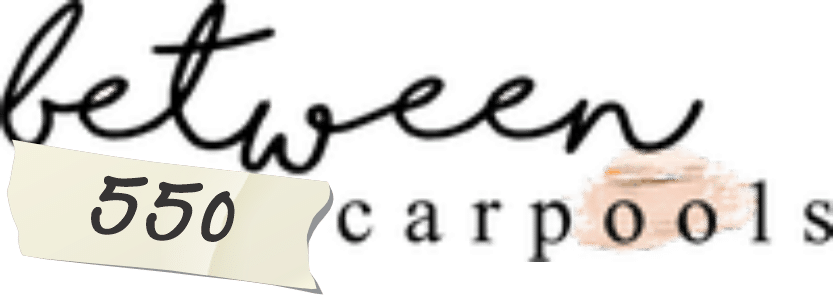You have an extra day to reflect and bring the lessons of Purim home. This is a good start.
As if Purim isn’t a short enough day, packed as it is with so much to do and not a second to spare, this year poses the additional challenge of an even shorter day. I don’t have to tell you this, you’ve already experienced your curtailed mishloach-manos rounds and super-early seudah. But there are some advantages to a Friday Purim, to a Purim that runs straight into Shabbos.
Purim is such an incredibly meaningful and powerful day. You’ve surely heard this a time or two before, and I’ve definitely written about it a time or two before. But it passes in such a blur, such a haze of noise and action and sugar that it’s hard to latch onto the meaning. And even if we find ourselves inspired for a moment, find ourselves tapping into the power of the day here or there, the moment quickly dissipates. We finish Purim in a whirlwind and then dive back into the real world while trying to dig ourselves out from under mountains of zazas and wafer rolls. Pesach waits for no one and barely have we recovered from Purim, when we are swept into the frenzy of the next Yom Tov on the calendar.
But this year is different. Somehow, miraculously, we make it straight from Purim into Shabbos, and then we have Shabbos! We have an entire day of rest to reflect and introspect, to play back the Purim we’ve just experienced and mull over what it all meant. We have a brief interlude before diving right back into things to figure out how to take the lessons and messages of Purim and integrate them into our daily lives.
Here are some Purim lessons to take with you into the week and year ahead:
Holding onto Hope
It’s hard to fathom the despair of the Jewish people at the time of the Purim story. They seemed irrevocably doomed to total annihilation. There was a decree! With the king’s seal! Their only hope, their friend in the palace, turned her back on them by cavorting with the enemy himself! Could there be a situation any more hopeless? It seemed that no one could possibly extricate them from the mess they were in. No one, but Hashem. And extricate He did. In the most powerful way possible, He used the symbols of despair to bring about the miracle of salvation. Every Yom Tov brings with it a powerful element of emunah, and Purim is no different. Just like Hashem saved the Yidden of that time from a horrible decree, Hashem can bring about the salvation you are seeking in your own life. No challenge is too hopeless for Him. Have faith, and He will deliver.
As you unwind from Purim, whose preparations took over your life over the last few days, real life will start to seep back in. What are you struggling with right now? Do you feel like there is no end in sight? No hope for reprieve? Let the Purim story empower you to embrace the light of hope, to truly believe that Hashem can turn things around in a moment’s time. And He can save you from whatever tunnel you are trapped in right now.
Serving with Joy
One of the divrei Torah that is repeated in our home every single Purim without exception is the iconic laYehudim-haysah-orah vort. Orah zu Torah, simchah zu yom tov, sasson zu milah, yekar zu tefillin. It’s not that they hadn’t held onto their Torah, Yom Tov, etc., and then with their salvation they regained their Yiddishkeit. The Torah was there, the tefillin was there, but the lights and the joy and the spark in them had died. They were living a life of serving Hashem by rote, and then with their teshuvah came a new level of service, avodas Hashem through ahavah. They were a new nation when they were saved, a nation who now knew the light of Torah, the joy of Yom Tov, the happiness of milah, the preciousness of tefillah.
How can we bring the joy of Yiddeshkeit into our own homes? How do we ensure that our life of Torah, tefillah and chessed is a life of the light of Torah, not only the rote keeping of it?
We need to make sure we ourselves first feel the joy and the light, so that our own internal joy will overflow and embrace our family. Otherwise, everything else we do to bring the joy of Yiddehskeit into our homes will feel forced. So, first inspire yourself. Listen to shiurim, use your own hobbies and talents to enhance your avodas Hashem, find the joy within yourself.
Then your children will imbibe it by osmosis.
Make Yiddishkeit exciting in your home. Let Torah milestones be celebrated with joy. Approach each Yom Tov with excitement, with family-wide projects and activities. Sing and dance. Make it a habit to mention Hashem in connection with everything good that happens to you or your children. Practical ways to make Yiddishkeit joyful in your home is a topic for an entire article, so if you have any ideas that have worked for you, let me know and perhaps I will write up a separate article some day! For now, do what works in your own home to bring Hashem into it with joy and celebration.
Embracing Everyone
The reaction to Haman’s terrifying edict, one built on the premise of am mefuzar umeforad, a nation spread apart, was lech kinos es kol haYehudim, gather them all together. When we are besieged from the outside, we must huddle together on the inside. We are thankful to Hashem that we don’t live under the terrifying threat of worldwide genocide, but there are whispers all around us. We need to do what we should have done all along: stop rejecting Yidden who are different from us, stop creating rifts that create chasms between brother and brother, sister and sister. You don’t have to agree with someone to respect them; you don’t have to be on the same religious level or socioeconomic status as someone to embrace and to love him. As my wise grandmother likes to say, “We have enough people who hate us, the last thing we should be doing is hating each other.”
On Purim, everyone’s a brother. Barriers are broken, strangers are embraced. I remember one memorable Purim seduah, when a stranger stumbled through the door, dancing and singing. One of the inebriated men at our seudah got up and loudly announced, “I don’t know who you are, but I love you!” He hugged the stranger and the two began dancing together. That sentence—I don’t know who you are but I love you—became a Purim tagline in my mind ever since. And no, I don’t think we ever figured out who that stranger at our Purim seudah was.
But here’s the thing: While the rest of the year can’t necessarily operate with the same lack of boundaries and seder as Purim tends to, perhaps we can remove some of the barriers that surround our hearts during the year? Perhaps we can approach stranger and friend alike with the same wide open ahavas Yisroel and joy that we do on Purim itself?
Every stranger is indeed a brother, on Purim and every day. What can we do to let some of that love infiltrate our daily lives?
Perhaps we can judge less and accept more.
We can daven for people we encounter who seem to be struggling, even if we don’t know them or their struggles.
We can reach out to those who can use some warmth in their lives.
We can stop labeling people and keeping a distance from those whose labels differ from ours and start seeing each Yid as a neshamah, first and foremost.
We can embrace our stranger-brothers with the kind of deep and sincere ahavas Yisroel that we need to bring the geulah shleimah.
Seeing Hashgachas Hashem Everywhere
The saga of Purim is one long episode in hashgachah pratis. It so clearly defines Hashem’s position as Mashgiach Min Hachalonos, Meitzitz Min Hacharakim. So many random occurrences, occurrences that at first added up to a supremely troubling picture, before the very source of bad became the catalyst for good and even the tiniest details fell into place. This level of hashgachah is visible in every one of our lives, we only have to look out for it. If we’re lucky we can see it clearly in hindsight, or even as we go along. So many details working out just so, down to exact timing and seemingly insignificant minutiae. Vashti gets killed to make way for the yeshuah in the palace. (How many times do you see the refuah in your life before the makah rears its ugly head, the former only apparent once the latter happens?) Haman shows up at the palace just at the moment when he needed to carry out his part in this perfectly orchestrated script. (How many times do you see the hashgachah in timing: the song that comes on the radio exactly when you need to hear it; the friend who calls at the very moment you need her?) The gallows that should have been the climax of tragedy became, instead, the pinnacle of yeshuah. (How many times has the thing you thought was the worst thing in the world turned out not to be that bad at all, or even the very best thing that could happen?) Not a single open miracle, and yet one long, natural miracle. It is the story of our lives.
What steps can you take to start seeing this aspect of your story?
Living a life focused on hashgachas Hashem, on feeling grateful for the small miracles that we find all around us when we begin to open our eyes, is living a life of true joy and purpose.
Perhaps you can start keeping a hashgachah journal, where you record instances where you have seen hashgachas Hashem in your daily life.
You can encourage your family members to share hashgachah stories that they experienced throughout their day. It’s a great dinnertime activity, going around the table and having everyone share one story. At first, not everyone might have a story, but once they are looking out for the stories, they will see them everywhere. I shared before on these pages how this worked out for me personally, back in Mrs. Gartenhaus’s ninth grade Pirkei Avos class. She would dedicate time at the beginning of each class for us to share any hashgachah stories that had happened to us. In my quest for stories to share, I began looking for them, and the more I looked, the more I found. Try it!
A wonderful idea I’ve heard from someone who, like me, spends many hours in front of a computer screen, is to create an email account especially for hashgachah stories. Every time something happens, she will shoot an email from her regular account to this special account and she now has a treasure trove of stories collected that she looks through any time she feels her spirits flagging.
Recognizing Our Divine Mission
To me, the words umi yodei’ah im la’es kazos higaat limalchus are some of the most poignant, powerful words in the entire megillah. We are all placed in this world, and in our particular space in this world, for a purpose. Our life mission is to achieve that purpose and make the world a better place in the process. Ours is not to know our mission, for there is so much that must be done in our journey toward achieving it. But the most tragic consideration is that of one who was brought face to face with his destiny, with his unique mission and purpose—and passes on by. We never know why we are placed in the circumstances in which we are placed, and sometimes they are painful ones. But every detail surrounding our lives, perplexing as it may seem, is put into place to help us achieve our noble mission. And when an opportunity comes our way to make a difference, an opportunity that is powerful in its impact but painful in its execution, we must ask ourselves, “And who knows if every event in our lives brought us to this place, for this very purpose?” Not everyone is blessed with the knowledge of what their mission is once they’ve carried it out, but we must at least make sure to live our lives in a way that won’t allow our sacred task from slipping from between our fingers.
This is a lifelong and often abstract endeavor, so it is hard to talk about it in practical terms, but perhaps we can work on being more mission-focused, one day at a time.
Do we pass on opportunities to do chessed, to spread Torah?
Are there challenges we choose to fold under instead of rising above?
Do we use our life circumstances, moment by moment, to grow and to inspire others, to find purpose within pain and meaning within suffering?
When we remind ourselves that we were placed in this moment of time for a purpose, and everything going on around us and within us can be a tool to grow and help others, we can achieve our destiny one moment at a time.
Being Authentic
On Purim things aren’t as they seem, but they are more real than they ever are. We wear costumes to show that things are turned on their head on this topsy turvy day, but they are costumes that reveal our deepest desires. We drink to divest ourselves of our inhibitions, so that our true holiest essence can be revealed. Purim is a day that a mask of indifference is peeled to reveal the raw vulnerability of desire and growth. When everything became the opposite in the Purim story, that was how it was meant to be all along. Megillas Esther, revealing the hidden, refers to the hidden hashgachah, but can also refer to the hidden parts of ourselves that come to the fore on this day of merriment. Your kids will tell you that Purim is a day to “let go,” and you will strongly disagree. But there is a bit of truth in that. No, it’s not a day to let go of our yiras Shamayim and indulge in what is forbidden all year round, but it is a day to let go of our facade and get in touch with our inner self.
What did you discover about yourself this Purim? How can you use that to live a more authentic life moving forward? It’s hard all at once. The reason why we tend to wear our masks is because vulnerability is scary and we are afraid of what will happen if we lay ourselves open. So don’t try it all at once. Take one step, one corner of the mask, and peel it away, living that aspect of life in the truest, most authentic way possible.





Wow! This is so beautifully written!! Thank you so much for the inspiration!!
I second that! In the midst of running around preparing for yt this is just the boost of inspo I needed! Thank you